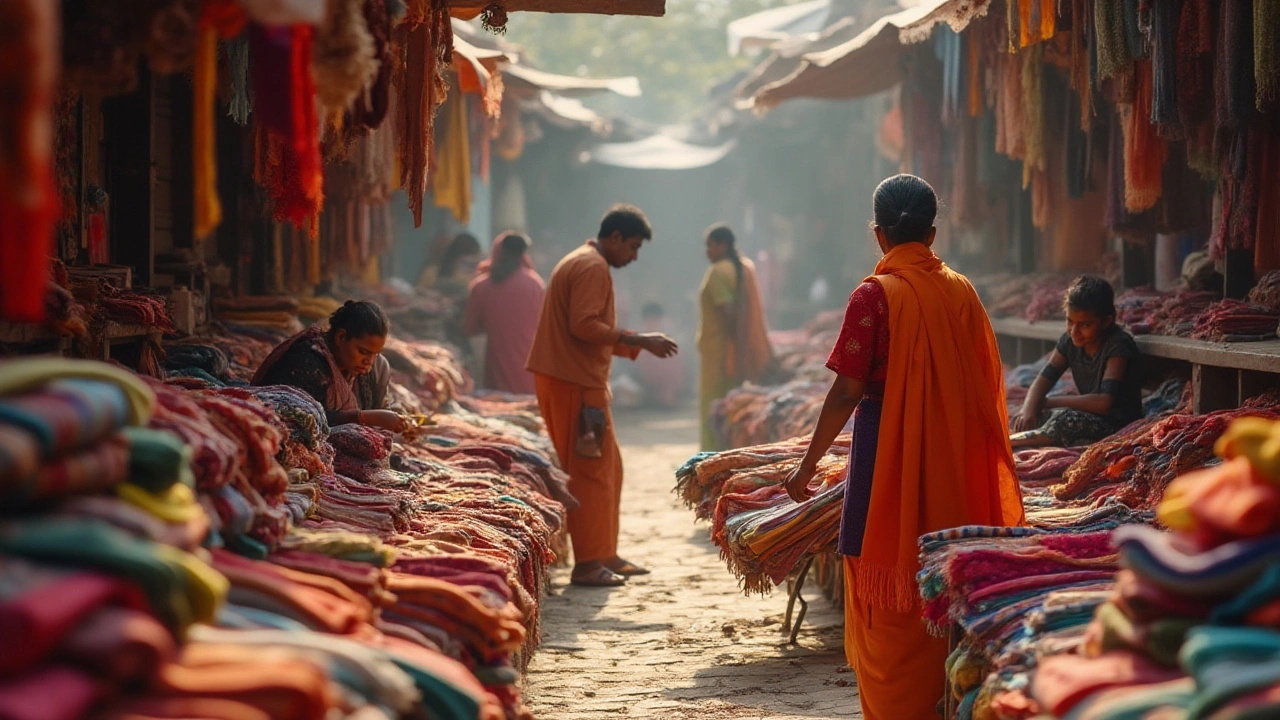India Textile Industry Overview: Trends, Hubs, and Opportunities
If you’re thinking about entering or expanding in the Indian textile space, you’ve landed in the right spot. The sector is one of the country’s biggest employers and a major export earner. Below you’ll find the most useful facts – from where the biggest factories live to what fuels growth today.
Key Textile Hubs in India
Surat leads the pack as the fabric capital of India. Its power loom clusters churn out cotton, polyester, and blended fabrics for brands worldwide. The city’s proximity to ports makes shipping fast and cheap.
Beyond Surat, Tirupur in Tamil Nadu is famous for knitwear. Small‑batch factories here supply both high‑end and fast‑fashion brands. Coimbatore and Erode add more cotton yarn capacity, while Bangalore’s tech‑driven parks attract textile machinery makers.
In the north, Ludhiana supplies a steady stream of wool and synthetic textiles. Its strong network of wholesalers helps smaller players reach bigger markets without heavy logistics costs.
Growth Drivers & Opportunities
Government schemes are a big reason the sector keeps expanding. The Technology Upgradation Fund Scheme (TUFS) offers low‑interest loans for modern looms, while the Production Linked Incentive (PLI) program rewards manufacturers that boost export volumes.
Consumer demand is shifting toward sustainable fabrics. Brands are looking for organic cotton, recycled polyester, and low‑water dyes. If you can source or produce these materials, you’ll find buyers ready to pay a premium.
Export numbers tell a clear story: India shipped over $38 billion worth of textiles in 2023, with the US, EU, and Middle East leading the list. That means the market isn’t just domestic – it’s truly global.
Technology is another game‑changer. Automation, AI‑driven quality checks, and digital design tools cut waste and speed up production. Small workshops that adopt even a few of these tools see profit margins rise by 10‑15%.
Finally, talent is abundant. Thousands of skilled weavers and designers graduate each year, keeping the supply chain flexible. Pair that with India’s competitive labor cost and you have a recipe for high‑volume, low‑cost manufacturing.
In short, the Indian textile industry offers a mix of established hubs, supportive policies, and rising demand for green and tech‑enabled products. Whether you’re a startup looking for a niche or a big player hunting new capacity, the market has room to grow. Dive in, choose the right hub, tap the government incentives, and stay ahead of the sustainability curve – that’s the formula for success in today’s Indian textile landscape.

Exploring India's Queen of Textiles: A Deep Dive into Textile Manufacturing
India has long been recognized as a hub for textile manufacturing, a crown attributed to the skill and craftsmanship woven into every piece of fabric. Often hailed as the 'Queen of Textiles', this country's rich history and strategic innovations have solidified its status globally. Discover the pivotal role played by textile manufacturing in India's economy, the influential figures in this industry, and the unique textiles produced here. Gain insights into why India remains a powerhouse shaping the global textile landscape.
Read More